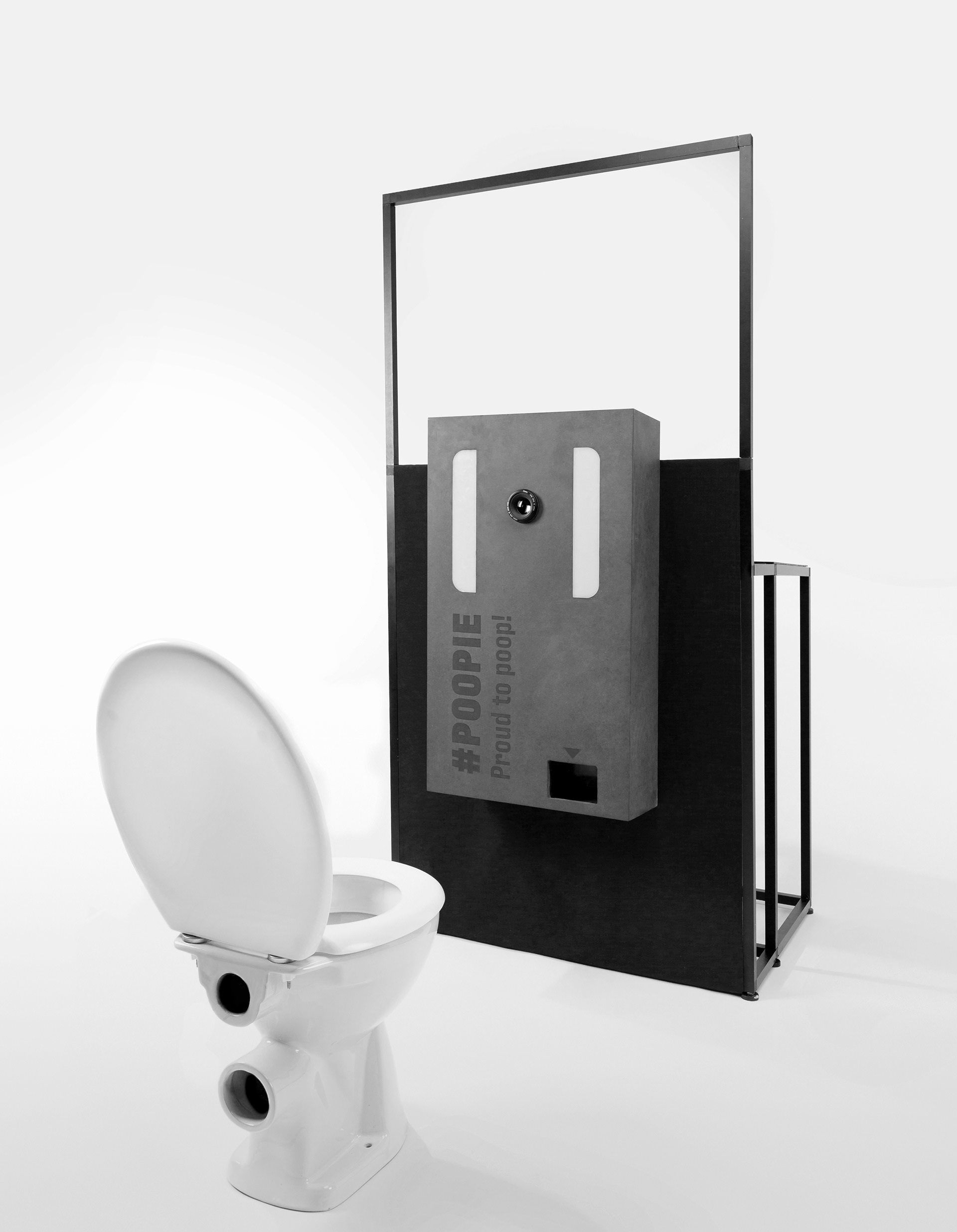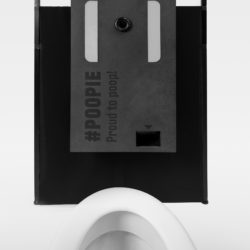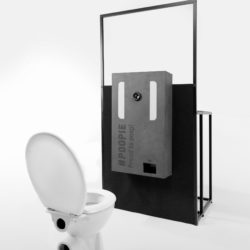The Critical Loo
Description
Room installation / Critical Design Concept: #Poopie The #Poopie room installation is a photo booth that is able to photograph the faces of people at the moment of defecating - a critical design concept as part of my bachelor thesis. "A poopie is like a photo on a roller coaster, but more intense." It's time for us humans to stop being ashamed of our shit and finally be proud of our digestion! # proud2poop Just squeeze a little more, then it is there, the final redemption - say cheese! Splash. Snap! Your poopie is ready. This toilet photographs your face at the very moment that your poop breaks through the water's surface. A sensor triggers a camera with pinpoint accuracy. The image is automatically printed and displayed with the message "#Poopie - Proud to poop!". Now quickly wipe your butt and put on the pants, your personal # proud2poop moment will soon be ready for you. Share your poopie with the world and become part of the movement!What is the Topic?
We are all born and, it is certain, must die at some point. Even in the meantime, our lives, whether we like it or not, are dictated by a variety of natural rhythms and cycles - from waking up in the morning to falling asleep in the evening. We eat, drink, and finally, we feel an urgent need to get rid of all the things that our bodies could not use. Going to the toilet is our daily companion, but we generally keep silent about what and how we do it. The quiet village manages to unite society in the smallest common denominator and at the same time split it in many ways. The toilet polarizes and every day you move around in this area of tension between social rules and norms. Here evidence-based facts collide with post-industrial social constructs of naturalness, cleanliness, and purity. While the economy in this area has long tapped feelings of shame and fear as a profitable cash cow, the discussion about social inequality, for example between the sexes, is gaining momentum in parts of the population. The behavior on the toilet shows different social phenomena and allows direct conclusions to be drawn about the functionality of society. Anyone who thinks that the only thing of importance at a toilet is the disappearance of unpleasant metabolic end products is mistaking the complexity of this topic. Freely accessible toilets in particular often experience the most violent stigma in our culture. In large parts of society, they are controversial places, no-go areas, which are often only visited when there is no alternative. The mechanisms of fear, disgust, and shame are numerous. They ensure that going to the toilet becomes a gauntlet for some. The typical economic response is a design, that often handles our irrational fears symptomatically. This kind of design does not change the fact that numerous people are ashamed of their excretions and bodily noises. On the contrary: It can be assumed that pubic thresholds will shift even further in the future. You might think we are in the midst of a trend of disembodiment, a departure from our nature. "The Critical Loo" examines public toilets as a place and object of communication and misunderstandings on a design-theoretical level. During this project, I deal with the needs, problems, and fears of toilet users and ask the question of design's role in this context. What can the design of a toilet do when it comes to dealing with shame and fears? How do designers deal with a topic that is full of prohibitions on speech and taboos? And last but not least: What contribution can designers make in order to transfer this topic into a discourse, detached from its taboo, and challenge the status quo? The installation "#Poopie" is a conceptual prototype, one of four critical design objects, that were created on the basis of social- and design theoretical analysis and user-oriented field research. These objects are not only to be regarded as a form of critical commentary, dealing with shame and fears in public toilets. They should also serve as inspiration for other designers and empower their own critical debate by data and facts.
Why does it look like this?
In its outer appearance, the #Poopie prototype is more functional and reserved than trendsetting and innovative. Its design creates a bridge between the strong theoretical-conceptual character of the thesis and its design-savvy audience. The draft wants to initiate discourse in a critical way and be present, but not dominant. Due to its sketchy general character, anticipations should be excluded and the viewer should be given space for their own ideas. Its formal language uses the usual cliché of a classic photo booth.
What is special?
What is special about the project is the combination of social- and design theory as well as user-centered research.
What is new?
–



